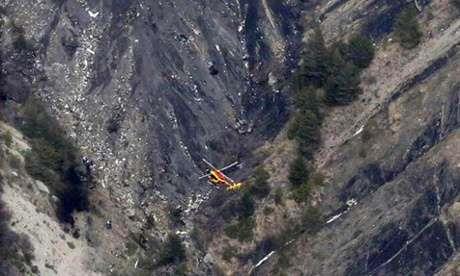February 2012
Construction Begins on Entrance Pavilions at Stations
Guideways Going Up Along Route 7 near Sheraton Hotel, Toll Rd. Interchange
As 2012 progresses, the face of Dulles Corridor Metrorail Project will change from dramatic aerial construction to building of stations and entrance pavilions and the laying of track.
February 2012
Construction Begins on Entrance Pavilions at Stations
Guideways Going Up Along Route 7 near Sheraton Hotel, Toll Rd. Interchange
As 2012 progresses, the face of Dulles Corridor Metrorail Project will change from dramatic aerial construction to building of stations and entrance pavilions and the laying of track.
During late winter and early spring a lot of bridge work will be completed but there will be plenty to see at Route 7 and the Dulles Toll Road interchange where the bridges will be built to carry the rail line from the median of the Toll Road and the Dulles International Airport Access Highway to Route 7.
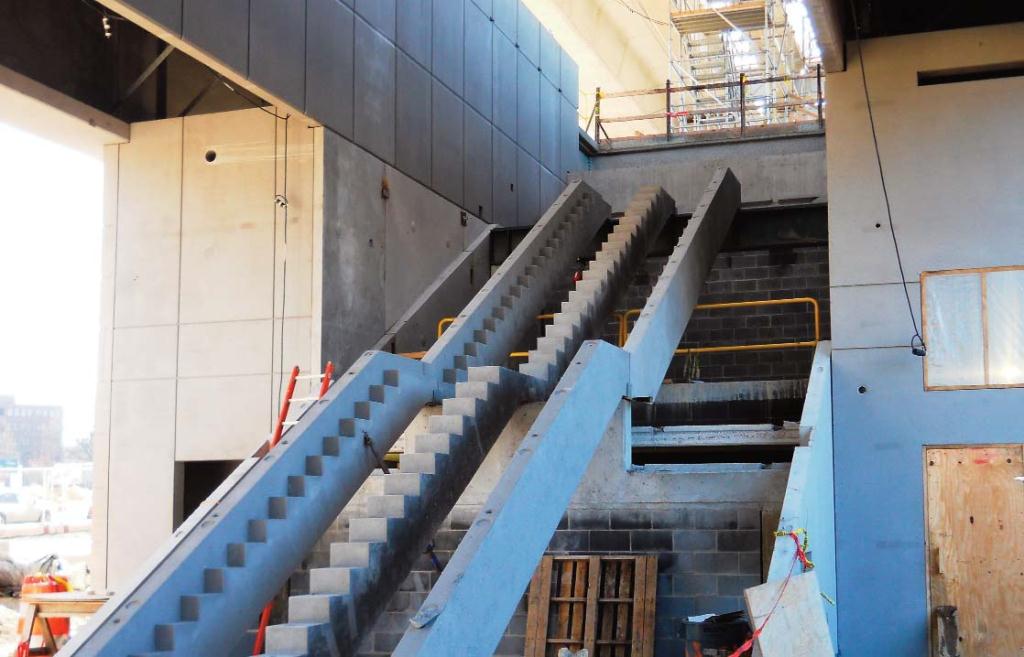
UP, UP AND AWAY: At the Tysons East Station at Route 123 and Scotts Crossing Road and Colshire Drive, the erection of the interior precast cladding, walls and the stairway/escalators are ready for escalator installation. Photo by Stephen Barna, Dulles Corridor Metrorail Project
A major focus of current construction is building the street-level pavilions that will provide transit users access to pedestrian bridges leading to the stations. Pavilion construction at stations along Route 123 and Route 7 will cause some temporary lane shifts, but impacts on traffic will be minimal.
Construction of the Tysons East Metrorail Station pavilion at the corner of Route 123 (Dolley Madison Boulevard) and Colshire Drive began in January.
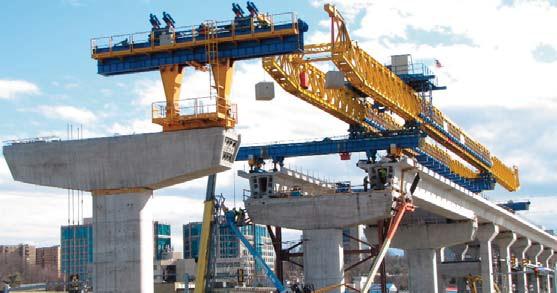
HIGH IN THE SKY: Aerial truss continues to raise segments of bridges into the air near Route 7 and Tyco Road. Photo by Chuck Samuelson, Dulles Corridor Metrorail Project
The pavilions on the south side of the Wiehle Avenue Station in Reston and on the north side of Route 7 (Leesburg Pike) next to SAIC will be the next to break ground, likely this month. Pavilions for the other stations –Tysons West at Spring Hill Road and Route 7, and at Tysons Central 123 at Tysons Corner Center, will begin later this year.
Each pavilion requires the driving of approximately 80 piles each. This is a noisy activity that drives steel piles into the soil to build the foundations for the pavilion structures. Pile driving will only occur between the hours of 7 a.m. and 5 p.m. on weekdays and the occasional Saturday.
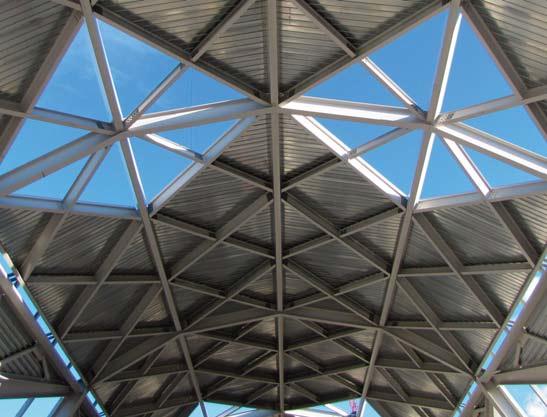
CANOPY AT WIEHLE: The canopy is very visible at the Wiehle Avenue Metrorail Station. Construction of this station is the most advanced of all five stations. Photo by Chuck Samuelson, Dulles Corridor Metrorail Project
Mining, Concrete Work Complete on Tysons Tunnels; Track Work to Begin Soon
Mining and concrete construction work has been completed on the two tunnels that will carry rail under a portion of Tysons Corner between the Tysons Central 123 Station at Route 123 and Tysons Boulevard and the Tysons Central 7 Station in the middle or Route 7 near SAIC and Marshalls.
This work on the twin bores of the tunnel marks a significant accomplishment given that the section was considered the most complex engineering and construction phase of the project due to the tunnel’s location, according to project officials.
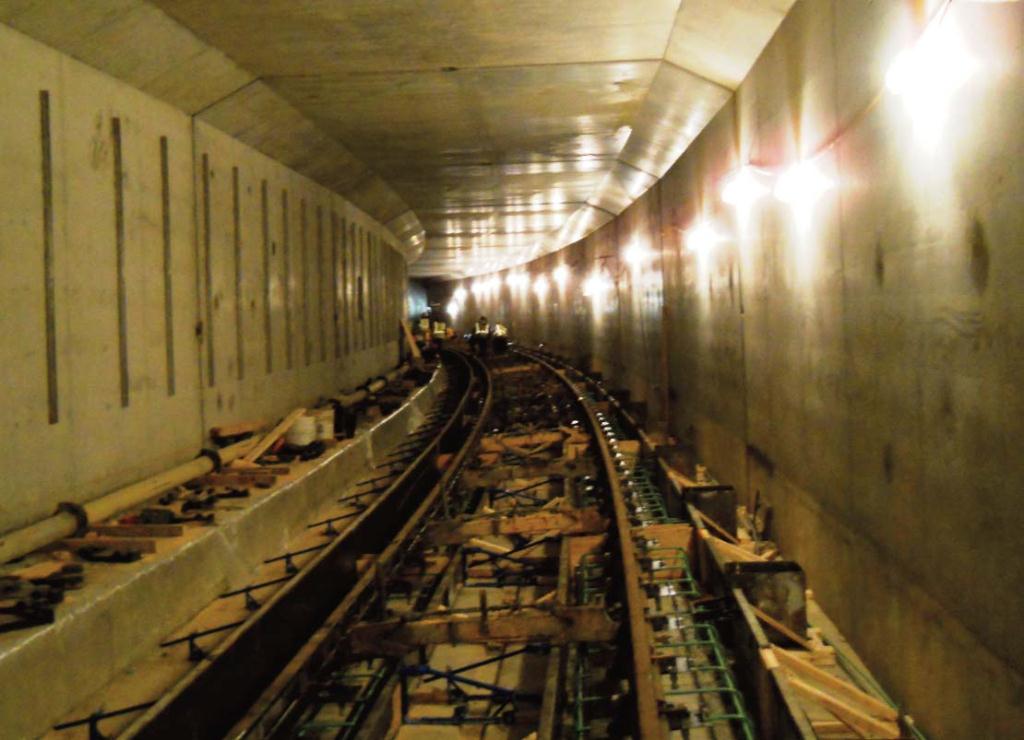
INBOUND TYSONS CUT-AND-COVER TUNNEL: Rails are being set in this portion of the tunnel under Route 7 just east of Route 123. Photo by Stephen Barna, Dulles Corridor Metrorail Project
In the coming weeks, the track work will begin inside the tunnels.
Construction of the tunnel began in October 2009 and was completed two months ahead of schedule and under budget in November 2011.
The tunnel was constructed using the technique called the New Austrian Tunneling Method. Crews would excavate a short section and then cover it with an initial lining of shotcrete. This process was repeated multiple times for both the inbound and outbound tunnels, which are each 1,700 feet.
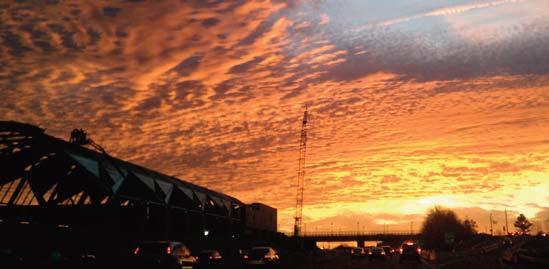
WIEHLE RISING: Winter sunrise along the Wiehle Avenue Metrorail Station. Photo by Brandy Swayze, Dulles Corridor Metrorail Project
During construction of the tunnel, crews removed approximately 100,000 cubic yards of earth for the openings; sprayed 25,000 cubic yards of shotcrete for the initial liner; and applied 18,000 cubic yards of concrete for the final liner. With the tunneling complete, crews will now install the rail track.
The work was done by Dulles Transit Partners, the design-build contractor for Phase 1 of the Dulles Corridor Metrorail Project, a 23-mile extension of Metro’s existing service. Phase 1 includes five new Metro stations and 11.6 miles of new track. It is scheduled for completion in 2013.
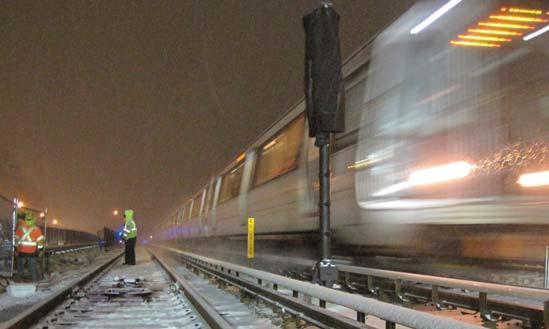
ORANGE LINE TIE-IN: In January, crews performed more work to tie in the new Silver Line to the existing Orange Line. This latest outage was a single-tracking outage, which means that one track is taken out of service for construction, while allowing trains to run on the remaining active line. This is risky, and all employees performing this work undergo a high level of specialized safety training for these areas. Photo by John Green, Dulles Transit Partners
PHASE 2
For the latest information on Phase 2, please visit www.dullesmetro.com and click on the Phase 2 Fact Sheet.
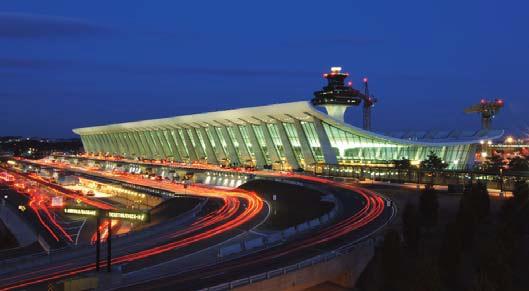
Courtesy: "DULLES CORRIDOR METRORAIL PROJECT"
















































































































